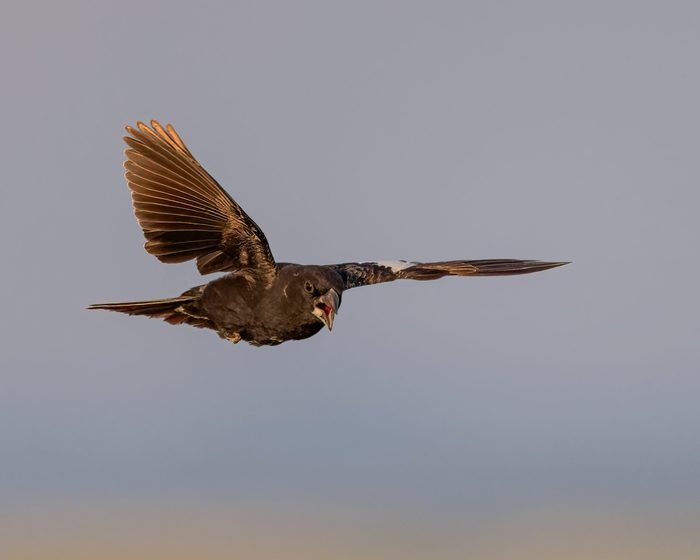
Birdsongs may simply be pretty outdoor melodies to humans, but for birds, there are practical uses behind the music. Male birds mainly sing to announce their claim to a territory and to attract a mate. They need to be heard, so they often sit up on a prominent, high perch to deliver their serenades. For example, a male cardinal may take to the top of a tall tree to sing his song, and a male song sparrow may fly up to the tallest nearby bush to sing after hunting for food on the ground. But if there aren’t any towering shrubs or trees nearby, there’s always the highest perch of all: the sky. Many birds that live in wide-open country make that choice, pouring out their songs while fluttering through the heavens above their patch of territory on the ground.
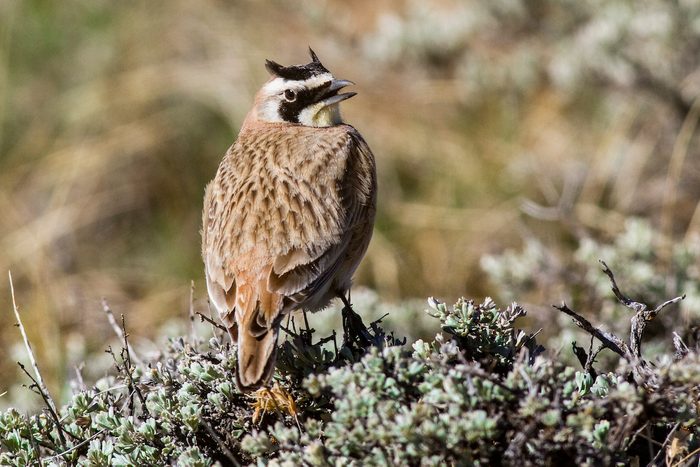
Horned Lark
One of the most widespread flight singers is the horned lark. This common bird, named for the tiny feather-tuft “horns” on its head, is found coast to coast but is easy to overlook. It spends most of its time on flat, open ground, such as plowed fields, pastures, short-grass prairies, southwestern deserts or Arctic tundra. At the start of the nesting season in early spring, the male horned lark begins his performance. He flies silently up and up to a towering height, often more than 500 feet above the ground. Then he faces into the breeze, spreads his wings and tail wide, and sings a musical, tinkling song. He may sing over and over, staying aloft for up to 10 minutes, before abruptly swooping back down to the ground.
Discover fascinating facts about swift birds.
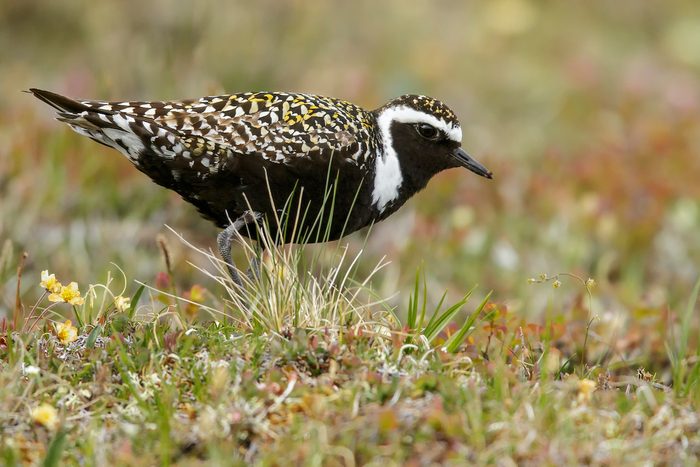
Shorebirds
Many shorebirds, including plovers and sandpipers, migrate to the Arctic tundra in summer to nest and raise their young. The tundra has no tall trees, so many of these shorebirds, as well as other Arctic birds, perform flight songs. The American goldenplover flies in wide circles, with slow, deep wingbeats, singing a series of mellow whistles. An odd flight display is performed by the male pectoral sandpiper, who puffs out his chest until he almost looks as round as a basketball, then flies in circles while making a deep, hollow hooting sound.
Learn how to identify birds by their song.
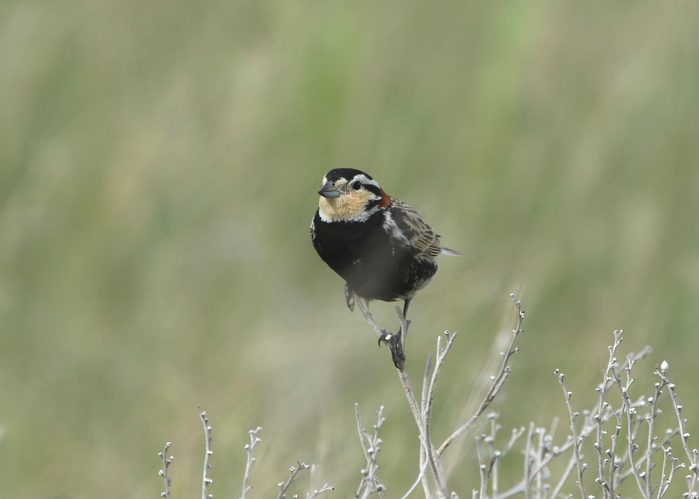
Prairie Birds
The Great Plains, the prairie heartland of North America, has many flight-singers. Some of them are small songbirds, such as the lark bunting, Sprague’s pipit and chestnut-collared longspur. One of the most beautiful songs is the breathy whistle of the upland sandpiper. This graceful “shorebird” that lives far from the shore is a strong flier. It migrates to South America and back every year. Once in its breeding grounds, it sings from the tops of fence posts and other raised perches, but usually floats on the wing high above the prairies to deliver its ghostly, whistled song.
Meet more prairie birds of the Grasslands.
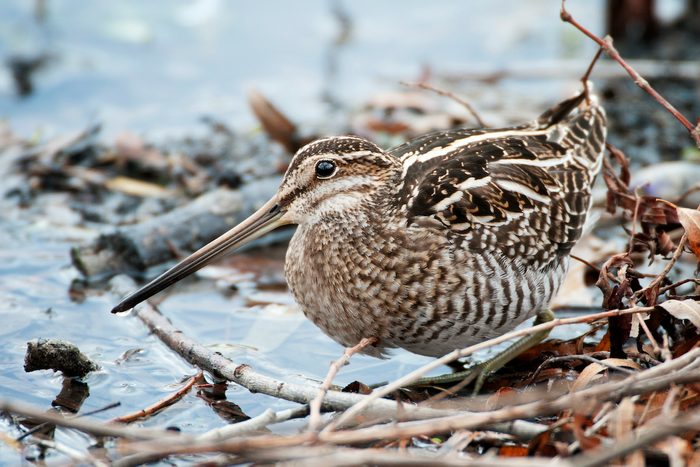
American Woodcock and Wilson’s Snipe
Another member of the sandpiper family that sings on the wing is the American woodcock. This secretive bird hides in woodlands during the day, but at dusk during the nesting season, the male woodcock flies over wet fields, making a chirping, twittering sound. However, only the chirping sounds are vocally made. The twittering is created by wind rushing through the narrow outermost feathers of his wings. A bird related to the woodcock, the Wilson’s snipe, also has a surprising way of making music. As the male snipe zooms through the sky over his nesting territory, he makes a rippling, hollow bleating sound, or “winnowing.” The sound is created by the narrow outermost feathers of the tail, which vibrate rapidly as the snipe swoops and dives through the air.
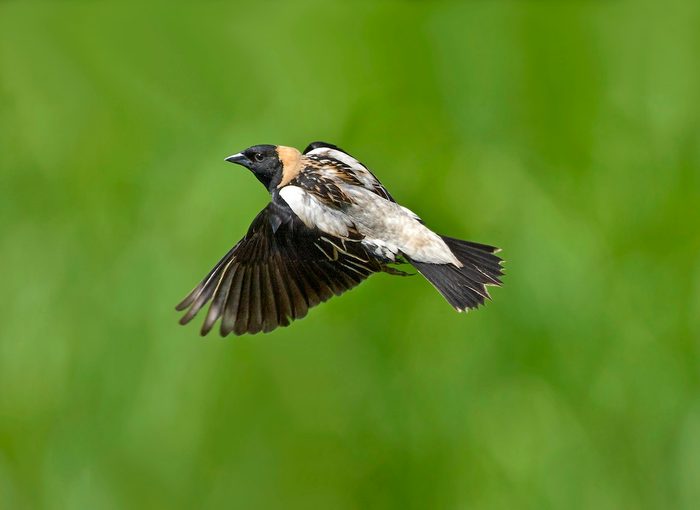
Bobolink
Not all flight-singing birds go high overhead, though. The male bobolink sings while flying in a circle over the meadows, but often he’s only a few yards above the top of the grass. He has such a striking color pattern that he may fly so low partly to show it off. The impact would be lost if he were high up in the sky. So he flutters and sings in plain sight, delighting the humans who get to watch.
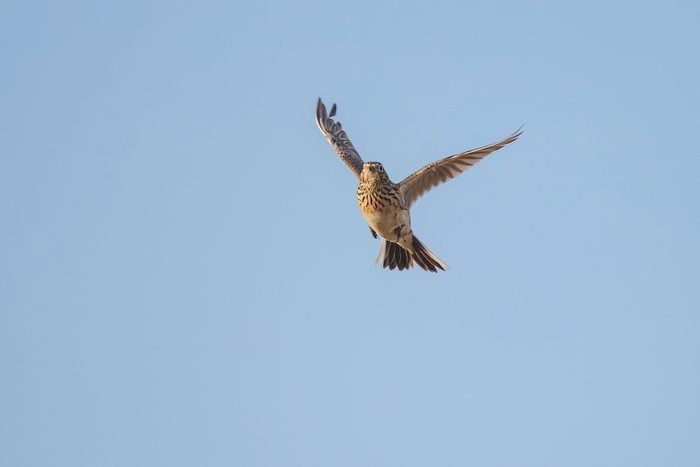
Skylarks
“Hail to thee, blithe Spirit!” That’s the first line of To a Skylark, written by British poet Percy Bysshe Shelley in 1820. Skylarks are popular birds in England, where they sing while fluttering high over farms and fields. Shelley wasn’t the first poet to write about skylarks. Shakespeare mentioned the species more than once, most notably in Romeo and Juliet. Skylarks aren’t native to North America, but they have been introduced in Hawaii and in farm country around Victoria, British Columbia. Larks from Asia also sometimes wander into Alaska.
What does a Baltimore oriole song sound like?
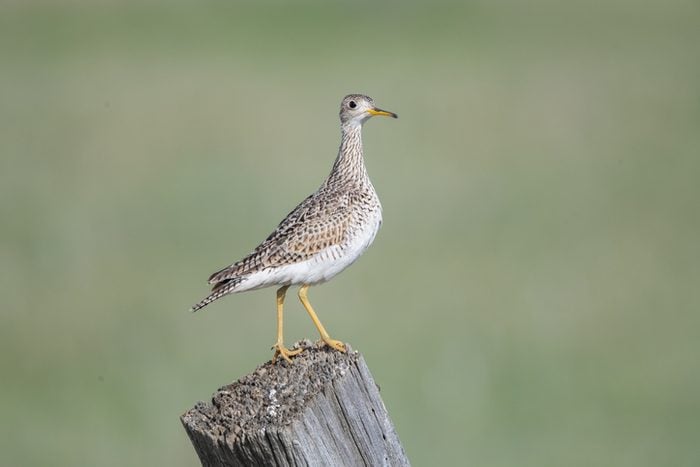
Sky Singer Birding Hotspot
Head to North Dakota’s national wildlife refuges for an up-close look at a few of these sky-singers. In late spring and early summer, the Des Lacs, Lostwood and Upper Souris refuges play host to sky-singers, like upland sandpipers, Wilson’s snipes, horned larks, bobolinks and Sprague’s pipits.
